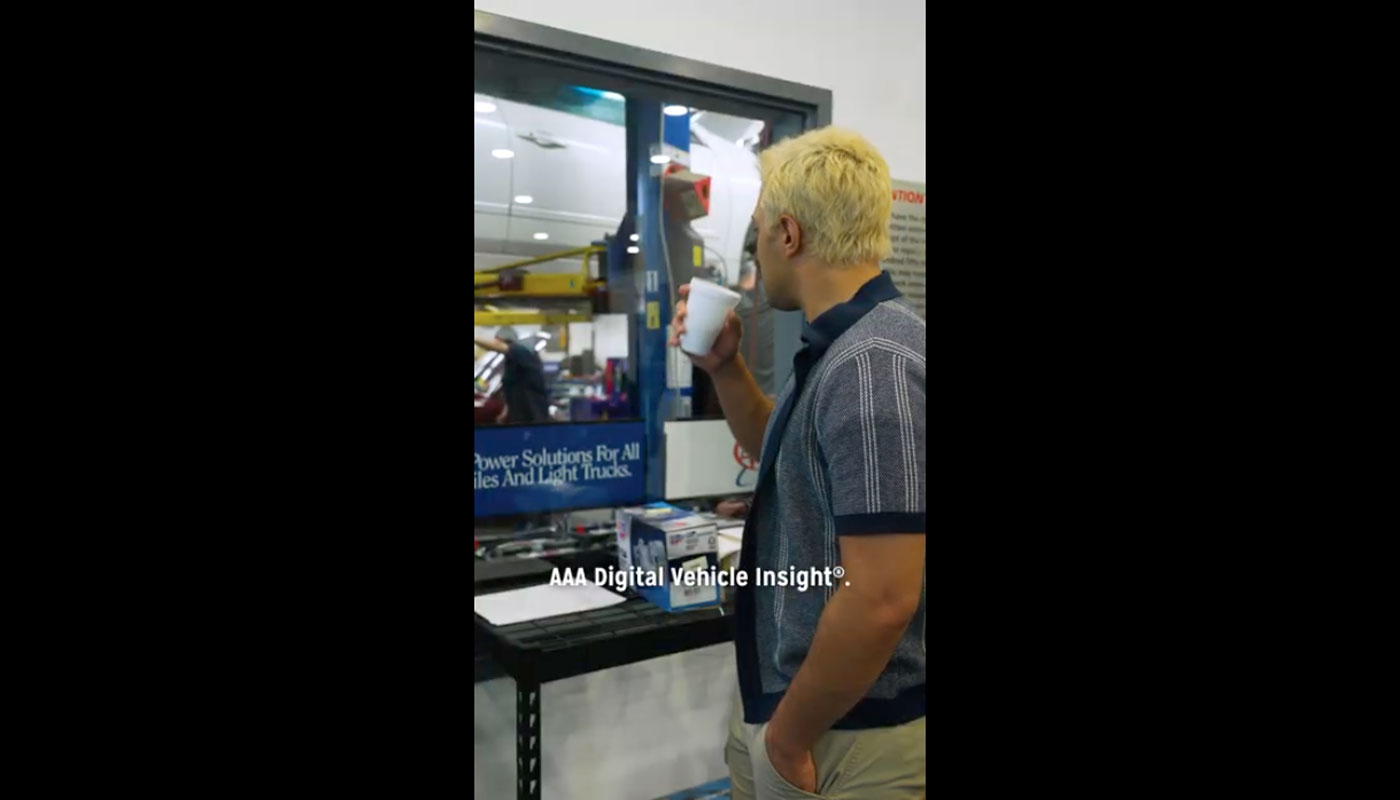To ensure you receive the best service possible,
please enter your zip code below:

Modern cars are packed with an alphabet soup of acronyms and abbreviations for features, technology, and safety systems that aim to make driving safer, smarter, and more comfortable. But let’s face it—deciphering those cryptic combinations of letters on your dashboard or in your owner’s manual can feel like trying to crack a secret code.
If you’ve ever found yourself scratching your head over terms like ABS, ADAS, or DVI, you’re not alone. That’s why we’re kicking off a new series called “What Does That Mean?” to help you decode the jargon and understand the innovations behind the letters. An important note is that the various car manufacturers use different names and acronyms for ADAS.
These articles will help readers break down automotive terms, acronyms and features into basic explanations to help owners understand their vehicles better. Whether you're buying a new car or trying to understand the tech in your current one, we’ll help you navigate the technology or features that get you where you need to go.
An important feature of newer cars is the technology that makes driving safer and more predictable. From cameras that help slow cars down as they get too close to the ones in front of them to technology that assists with parking, these devices, along with modern inspection tools that provide a clearer picture of a car’s health, help assist with smarter maintenance decisions and protect drivers and passengers.

While the idea for anti-lock braking system (ABS) for different types of transportation has been around for over 100 years, the modern version for cars wasn’t created until 1971. Now a required feature in new cars and trucks sold in the United States, ABS prevents the wheels of the vehicle from locking up when the car brakes are applied suddenly or hard.
With ABS, the car’s computer applies an on-off method to the brakes and monitors the hydraulic pressure applied to each brake. When a vehicle doesn’t have ABS, if a driver must slam on the brakes, the wheels stop turning. In some instances, but not all, the car keeps moving, increasing the distance needed to stop or causing drivers to lose control as the vehicle skids.
Owners of cars with the ABS feature might see an ABS warning light come up on their dashboard. While the system may need a reset, it’s impossible to determine the issue without examining it.
While brakes still work, driving with a faulty ABS increases the chances of skidding on slippery surfaces or the vehicle not being able to stop as quickly as in an emergency. So, the car needs to be inspected as soon as possible by a mechanic.

Have you ever been driving on cruise control and suddenly noticed your car slowing down as the traffic ahead of you slows? Or been backing out of a parking space and heard an alert go off that something was in the path behind you? These are just a couple of examples of how ADAS is helping drivers.
Also known as Advanced Driver Assistance Systems, ADAS advises when other cars are in blind spots, assists with parking, and provides lane departure and forward collision warnings. Using a variety of sensors and cameras around the perimeter of the car or truck, ADAS sends information to the computer system and helps drivers with safety features.
Although drivers should never rely solely on ADAS for protection. ADAS is an assistance system and never replaces the role of the driver. It is important that drivers always pay attention to road hazards remains crucial. Having ADAS provides an added measure to make driving safer than in the past.
Drivers may occasionally see an alert on their dashboard indicating that the Advanced Driver Assistance Systems is disabled. If it is raining or snowing very hard when this happens, there’s no reason to be concerned since splashes from the roadway can conceal the camera on the front bumper.
However, suppose the alert doesn’t disappear when the weather clears up or comes on in sunny weather. In that case, the vehicle needs to be taken to a mechanic.
Sensors that are out of alignment, even one inch, can cause misreads. So ADAS also needs to be periodically calibrated. A common instance where this happens is with replaced windshields; many cars have a sensor on the top front where the rearview mirror sits.
Calibrating the ADAS after replacing the windshield ensures that it works properly. Additionally, crashes or the age of the vehicle might also require calibration.
Drivers should always consult their particular vehicle’s owner’s manual for detailed information about how their vehicle functions and its features.

While many drivers associate all-wheel drive with snowy mountain roads, it can be helpful in more situations than one might think. Even if you’ve never driven an AWD vehicle, understanding how it works can help you decide if it's a feature worth considering in the future.
Many cars and trucks are front-wheel or rear-wheel drive, so they provide power to only two wheels. All-wheel Drive (AWD) vehicles send power to all four wheels to provide extra traction when needed, assisting in rain, loose gravel, snowy conditions or uneven roads.
Created to help military vehicles, AWD became more popular in personal vehicles in the 1980s. While AWD works the same when activated, there are options to have it activated full-time, have a driver-selectable option, or have it come on automatically when the car sensors detect that it’s necessary.
It is important to note that the mechanical terms 4-Wheel Drive and AWD are technically not the same thing, as there are mechanical differences in how the four wheels are spinning. However, car maker marketing terms have at times meshed the two, sometimes even listing 4WD and AWD on the same vehicle.

Unlike traditional inspections, which involve a technician writing down notes and verbally explaining what they found, a Digital Vehicle Inspection (DVI) is a valuable visual tool that provides vehicle owners with a detailed digital report of their car's health.
Using tablets or smartphones to document each step of the inspection and capture photos, videos and comments, a DVI can be electronically transmitted to the customer via text or email so they can see the findings without even being on-site.
For repair shops, that means streamlined workflows and improved communication. Without having to make multiple calls or try to explain issues to a flustered customer, technicians can have the report break down everything within minutes, resulting in satisfied customers and a higher level of trust with your auto mechanic.
At our AAA Owned Car Care locations we feature a DVI named AAA Digital Vehicle Insight®. Our DVI includes photos, videos and technician notes about the complete health of your vehicle easily indicated in three categories including green (everything is good), yellow (this will need attention in the future) or red (urgent matter and possible safety issue). This lets consumers plan out their car's maintenance needs.
Understanding what these car abbreviations mean can remove a lot of the mystery from car ownership. Being familiar with the language that car dealerships and mechanics use makes it easier for car and truck owners to monitor maintenance and make more informed decisions when repairs are needed.
Knowledgeable technicians
You can trust AAA to help. AAA Members receive a free vehicle maintenance inspection upon request with any paid service at a nearby AAA-owned Car Care center or AAA Approved Auto Repair facility, a 36-month/36,000-mile guarantee on repairs at AAA-owned Car Care locations, and a 24-month/24,000-mile warranty at AAA Approved Auto Repair facilities. Members also receive a 10% discount on repair labor (save up to $75).
A: ABS stands for Anti-lock Braking System. It prevents wheels from locking during sudden braking, helping you maintain control.
A: Most newer vehicles include some form of ADAS, but the level of features varies by make and model. All vehicle owners should be responsible for knowing what their specific car has available and exactly how it works.
A: Not exactly—AWD automatically distributes power to all wheels when needed, while 4WD is usually driver-controlled and designed for off-road use.
A: A DVI provides digital reports with pictures and videos, making it easier for drivers to understand car issues and trust repair recommendations.
A: If it persists beyond weather-related issues, schedule an inspection immediately to keep safety features functioning properly.